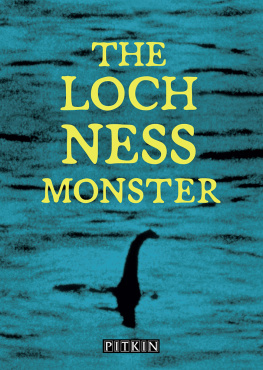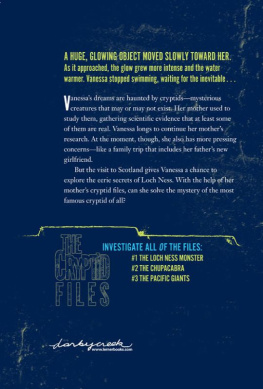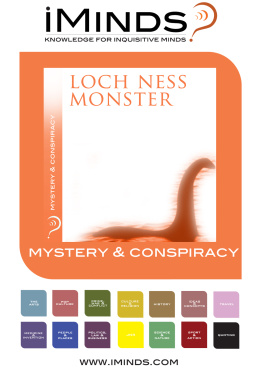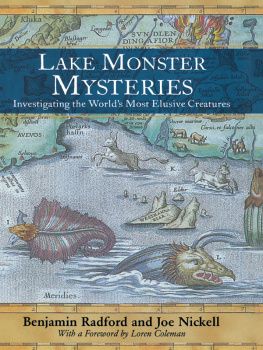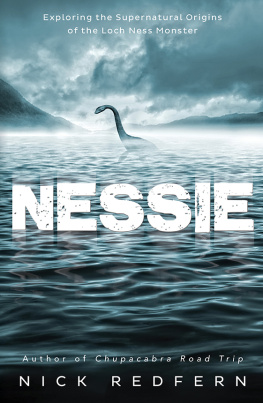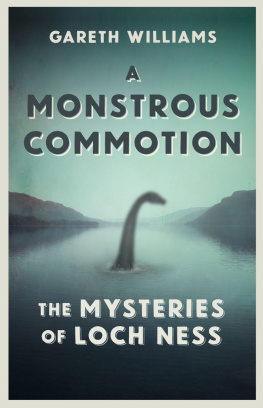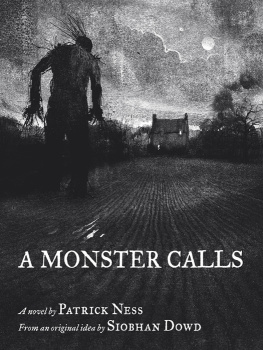Contents
Guide

CONTENTS

FACT OR FOLKLORE?
Situated in the Scottish Highlands, Loch Ness is an awe-inspiring place with a mystery lurking in its gloomy depths: the Loch Ness Monster.
Belief in the reality of the elusive monster has persisted for nearly 1,400 years, from the Dark Ages to the present day, and through the centuries Nessie (Niseag in Gaelic) as the monster is affectionately known has stubbornly refused to be dismissed as fiction. Modern science and technology have, if anything, deepened and complicated the mystery.
There are many possible explanations for the world-famous phenomenon, and 21st-century research benefits from the analytical tools at our disposal: modern zoology, wave physics, anthropology and psychology, supported by photo analysis, state-of-the-art imaging techniques, sonar and the latest developments in DNA sampling. Vital to the continuing search are the first-hand accounts of those individuals who claim to have seen the Loch Ness Monster and are in no doubt that Nessie does exist. Last but not least is the intrepid band of loners and eccentrics the monster hunters.
Searching for Nessie in Loch Ness inevitably takes people into some dark places. All of them from the scientific expert to the hopeful tourist can be applauded for their perseverance and for giving hope to all lovers of mysteries.
THE LARGEST LAKE IN BRITAIN
Loch Ness is unique a vast body of freshwater, with an estimated volume of 7 billion cubic metres, making it the largest lake in Britain. The loch is 39 kilometres long, stretching from Lochend at its northernmost point to Fort Augustus in the south. The steep sides of the loch and the gaunt crags and precipices give an impression of pressing in on one another above the surface of the water. The average width of Loch Ness is 1.5 kilometres and its waters very deep, plunging down to 228 metres, and 244 metres in the abyss by Urquhart Castle on its westerly coast.
The variation in colour and wave pattern of the lake surface gives Loch Ness its changing moods: deep azure under a bright blue summer sky can quickly change to inky black under dark clouds. The lake is cold: below 30 metres a more or less constant 5.5 degrees Celsius, although at the surface in summertime the temperature can approach 1014 degrees Celsius. The water brown because of the high peat content plunges into darkness below 8 or 9 metres with zero visibility.
If some dark pagan deity set out to design the ideal environment for an elusive monster to live and have its being, it would be Loch Ness.

MYSTERIES & SYMBOLISM
Human beings like mysteries: we are fascinated by those things at the edge of our understanding. Mythology our earliest stories and visual art is filled with monsters, creatures from the unknown that may, or may not, threaten us. They are everywhere: in literature, in cinema and in folklore the beliefs and stories which people of all cultures hand down through the generations. Often monster stories have some basis in reality. In Jules Vernes science fiction novel Twenty Thousand Leagues Under the Sea, the Giant Squid which attacks the submarine Nautilus falls into the category of unlikely but not impossible. It bears some resemblance to the serpentine monster described by Aristotle in the 4th century BC. This hazard to Greek shipping is said to have capsized a trireme, the most powerful war and trading ship of the period. The famous Kraken (main picture) of Norse legend, which devoured Viking ships, exhibited the same anti-social behaviour. The new technology used in David Attenboroughs 2017 documentary series Blue Planet II shows how much science has yet to learn about the ocean depths and the creatures that live there.
Of course the Loch Ness Monster exists: it exists in our Collective Unconscious.
Anonymous Jungian analyst
The inexpressible can only be expressed in terms of symbols and myth .
Carl Gustav Jung
In contrast to the vastness of the seas or oceans, inland lakes are part of our human landscape. A lake is also an alien world to terrestrial Homo sapiens, but the relationship to these bodies of water is more intimate. We live by lakes, we fish them and have the opportunity to observe them constantly, and out of what we see (or think we see) we weave stories and myths. In addition to its physical reality as a barrier to be crossed and a source of food, a lake has a symbolic value. The mood of a lake changes as it mirrors the sky, and in the myths mankind creates its depths are often seen as portals to another world, a realm that is unseen and unknown. Lakes are often dangerous, too, life-threatening and sinister. Unlike the rivers which feed them, the life-current in a lake does not flow, it is contained.

Twenty Thousand Leagues Under the Sea a classic tale of underwater mystery.

WORMS & MONSTERS
Nessie may be the most famous lake monster in the world, and probably the most documented, but whatever it is the Loch Ness Monster is not a unique phenomenon.
Lagarfljt Worm
Far north of the Scottish Highlands, in Iceland there is a monster with a curiously similar career to Nessie: the Lagarfljt Worm, which has many parallels in the phenomenon of the Loch Ness Monster. It has been sighted on several occasions in modern times notably by the Head of the Icelandic National Forest Service, and by a teacher and a group of students and videos of the Worm have been broadcast. The first recorded Worm sighting dates from 1345: a wonderful thing; a map of 1585 shows Lagarfljt with the inscription in this lake appears a large serpent; and in 1638 a bishop writes of a strandvorm. Over its long history the Worm has been observed out of water, either coiled up or slithering into the trees, and has been assessed to be 12 metres long with several humps. All the usual scientific explanations have been put forward but the Worm still returns.
American and Canadian monsters
In the USA sightings of mysterious lake monsters have been recorded in numerous states. Among the most persistent is Old Greeny in Cayuga Lake, Ithaca, NY, for which sightings began in 1828 after the lake was connected to the Erie Canal. Other monsters have a much longer lineage and appear in the legends of Native American peoples. The same is true of Canada which has many lake monsters, with perhaps the most famous being the Nennorluk in Labrador, Newfoundland, and the Ogopogo in Lake Okanagan in British Columbia. In the 1870s a Mrs Allison described a sighting: My mother did tell us about seeing the Ogopogo in a storm going against the current, not with it.

